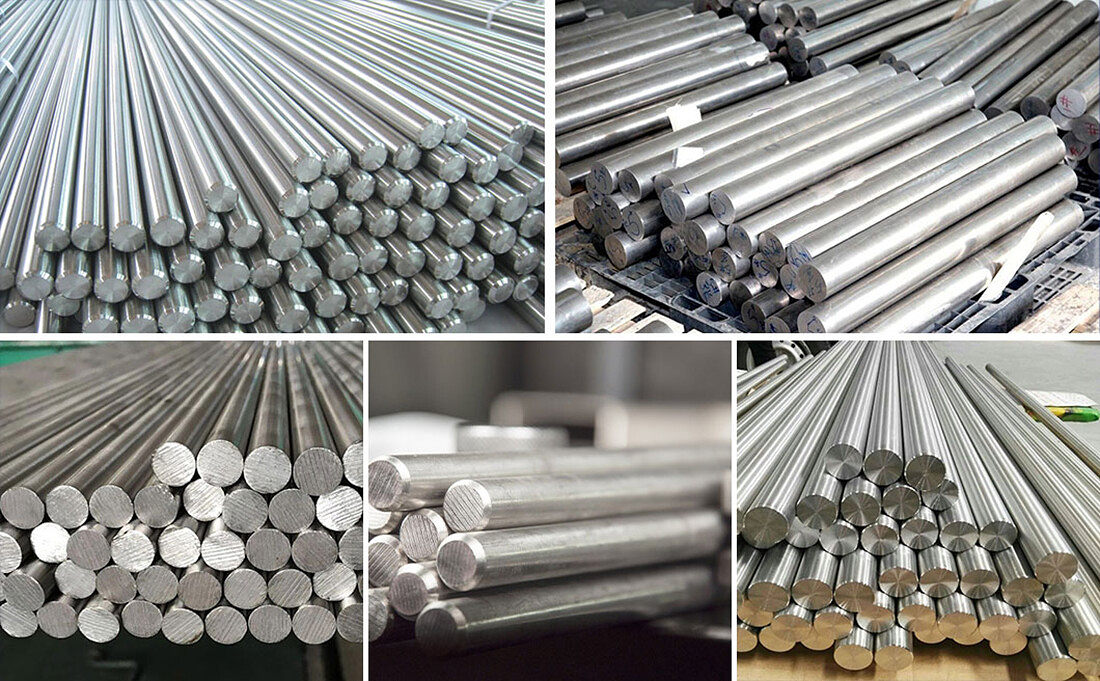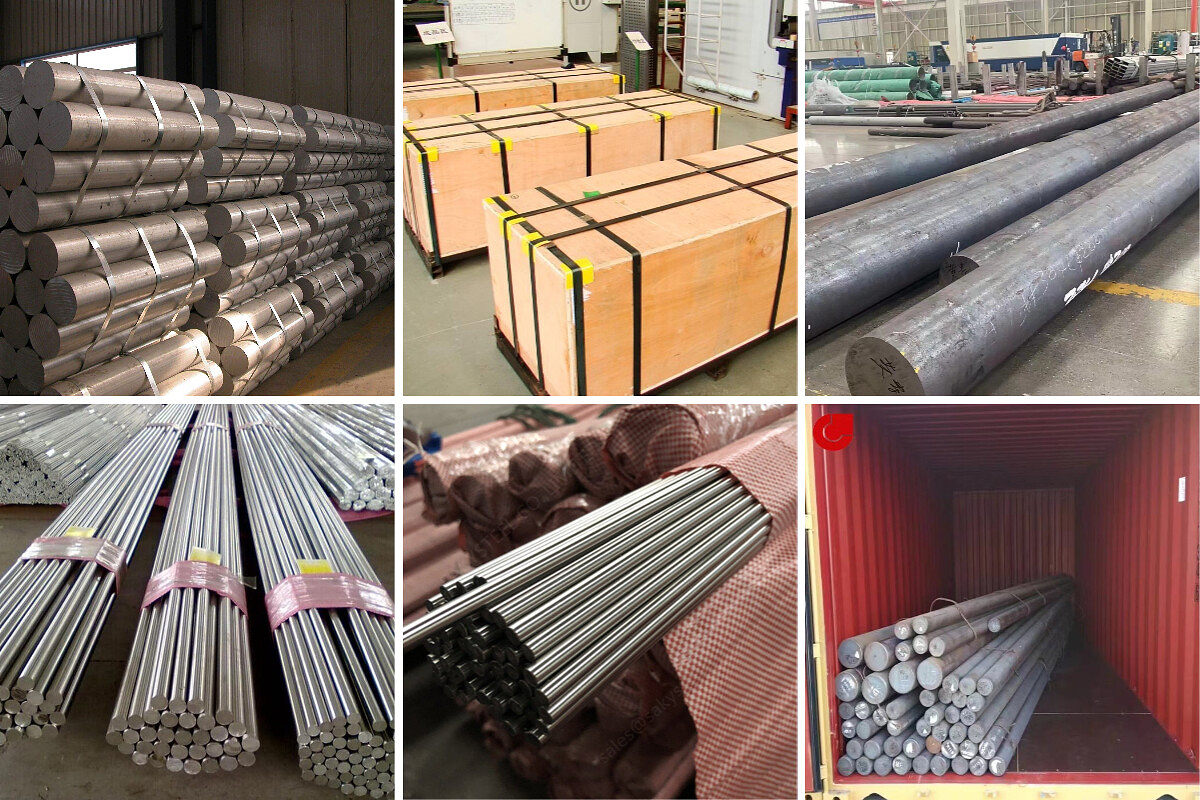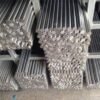The characteristics of SS321 stainless steel bar are as follows:
High temperature resistance: It has excellent high temperature resistance and can withstand corrosion and oxidation in high temperature environment for a long time.
Corrosion resistance: It has excellent corrosion resistance and can resist corrosion in many chemical environments, including organic acids, alkalis and solvents.
Oxidation resistance: It has good oxidation resistance and can resist high temperature oxidation and extend service life.
Processing performance: It has good plasticity and weldability and is easy to process into various shapes and sizes.
Mechanical properties: It has high tensile strength, yield strength and impact toughness, suitable for various engineering and structural applications.
Chemical element composition content: The chemical element composition content of SS321 stainless steel includes chromium (Cr), nickel (Ni), iron (Fe) and titanium (Ti). The proportion and combination of these elements give SS321 stainless steel high temperature resistance, corrosion resistance and oxidation resistance 3.
Strength and hardness: It has relatively high strength and hardness, which makes it perform well in some applications that require high strength and compressive resistance 1.
Ductility and stress fracture resistance: Compared with 304 alloy, it has better ductility and stress fracture resistance, and has better creep stress resistance and stress fracture resistance1.
Organization structure: As a duplex stainless steel, the organization structure of SS321 contains austenite phase and ferrite phase, which makes it have good corrosion resistance and strength1.
Application field: It is commonly used in chemical equipment, petrochemical equipment, food industry equipment and other fields under high temperature. It can also be used in aircraft, exhaust pipes, boiler drums, etc.; it is also widely used in chemical, petroleum and pharmaceutical fields.
| Produktname | Stabstahl aus Edelstahl |
| Standard | ASTM,JIS,DIN,GB,AISI,DIN,EN |
| Material | 201, 202, 301, 301L, 304, 304L, 316, 316L, 321, 310S, 904L, 410, 420J2, 430, 2205, 2507, 321H, 347, 347H, 403, 405, 409, 420, 430, 631, 904L, 305, 301L, 317, 317L, 309, 309S 310 |
| Technik | Kaltgezogen, warmgewalzt, kaltgewalzt und andere. |
| Diameter | 6-12mm oder anpassbar |
| Länge | 1000 - 6000mm oder anpassbar |
| Oberflächenbehandlung | BA/2B/NR.1/NR.3/NR.4/8K/HL/2D/1D |
| Herkunft | China |
| HS-Code | 7220204000 |
| Lieferfrist | {Lieferzeit} |
| Service nach dem Verkauf | 24 Stunden online |
| Produktionskapazität | {Produktionskapazität} |
| Preis Konditionen | EXW, FOB, CIF, CRF, CNF or others |
| Hafen laden | {Port} |
| Zahlungsfrist | TT, LC, Cash, Paypal, DP, DA, Western Union or Others. |
| Anmeldung | 1. Geschirr, Schränke, Rohrleitungen in Innenräumen, Warmwasserbereiter, Boiler, Badewannen |
| 2. Automobilteile | |
| 3. medizinische Geräte, Baumaterialien, Chemikalien, Lebensmittelindustrie, Landwirtschaft, Schiffskomponenten, usw. | |
| Verpackung | Bündel, PVC-Beutel, Nylongürtel, Kabelbinder, Standard-Export seetüchtig Paket oder als Anfrage. |
| Bearbeitungsservice | Biegen, Schweißen, Abwickeln, Stanzen, Schneiden und andere. |
| Toleranz | ±1% |
| MOQ | {MOQ} |
Zusammensetzung von rostfreiem Stahl
Stahl ist eine Legierung aus Eisen und Kohlenstoff. Nichtrostende Stähle sind Stähle mit mindestens 10,5% Chrom, weniger als 1,2% Kohlenstoff und anderen Legierungselementen. Die Korrosionsbeständigkeit von rostfreiem Stahl und
Die mechanischen Eigenschaften können durch Zugabe anderer Elemente wie Nickel, Molybdän, Titan, Niob, Mangan usw. weiter verbessert werden.
| Klasse | C | Si | Mn | P | S | Cr | Ni | Mo | N | Cu |
| 201 | ≤0.15 | ≤0.75 | 5.5~7.5 | ≤0.060 | ≤0.03 | 16.00~18.00 | 3.5~5.5 | – | – | 0.08 |
| 202 | ≤0.15 | ≤1.00 | 7.5~10.00 | ≤0.060 | ≤0.03 | 17.00~19.00 | 4.0~6.0 | – | ≤0.25 | |
| 301 | ≤0.15 | ≤1.00 | ≤2.00 | ≤0.045 | ≤0.03 | 16.00~18.00 | 6.00~8.00 | – | ||
| 302 | ≤0.15 | ≤1.00 | ≤2.00 | ≤0.035 | ≤0.03 | 17.00~19.00 | 8.00~10.00 | – | ||
| 304 | ≤0.07 | ≤1.00 | ≤2.00 | ≤0.045 | ≤0.03 | 18.00~20.00 | 8.00~10.50 | – | ||
| 304L | ≤0.030 | ≤1.00 | ≤2.00 | ≤0.045 | ≤0.03 | 18.00~20.00 | 9.00~13.00 | – | ||
| 310S | ≤0.08 | ≤1.00 | ≤2.00 | ≤0.045 | ≤0.03 | 24.00~26.00 | 19.00~22.00 | – | ||
| 316 | ≤0.08 | ≤1.00 | ≤2.00 | ≤0.045 | ≤0.03 | 16.00~18.00 | 10.00~14.00 | 2.00~3.00 | ||
| 316L | ≤0.03 | ≤1.00 | ≤2.00 | ≤0.045 | ≤0.03 | 16.00~18.00 | 12.00~15.00 | 2.00~3.00 | ||
| 321 | ≤0.08 | ≤1.00 | ≤2.00 | ≤0.045 | ≤0.03 | 17.00~19.00 | 9.00~13.00 | – | ||
| 430 | ≤0.12 | ≤0.75 | ≤1.00 | ≤0.040 | ≤0.03 | 16.00~18.00 | – | |||
| 2205 | ≤0.03 | ≤1.00 | ≤2.00 | ≤0.030 | ≤0.015 | 22.00~23.00 | 4.5~6.5 | 2.5~3.5 | ||
| 2507 | ≤0.03 | ≤0.08 | ≤1.20 | ≤0.035 | ≤0.015 | 24.00~26.00 | 6.00~8.00 | 3.0~5.0 | ||
| 904L | ≤0.02 | ≤1.00 | ≤2.00 | ≤0.045 | ≤0.035 | 19.00~23.00 | 23.00~28.00 | 4.0~5.0 | 1.0~2.0 | |
| INCONEL028 | ≤0.03 | ≤1.00 | ≤2.50 | ≤0.030 | ≤0.030 | ≤28.0 | ≤34.0 | ≤4.0 | ≤1.4 | |
| MONEL400 | ≤0.30 | ≤0.5 | ≤2.00 | – | ≤0.024 | – | ≥63.0 | – | ≤34.0 | |
| INCONEL800 | ≤0.10 | ≤1.00 | ≤1.50 | – | ≤0.015 | ≤23.0 | ≤35 | 4.0~5.0 | – | ≤0.75 |








